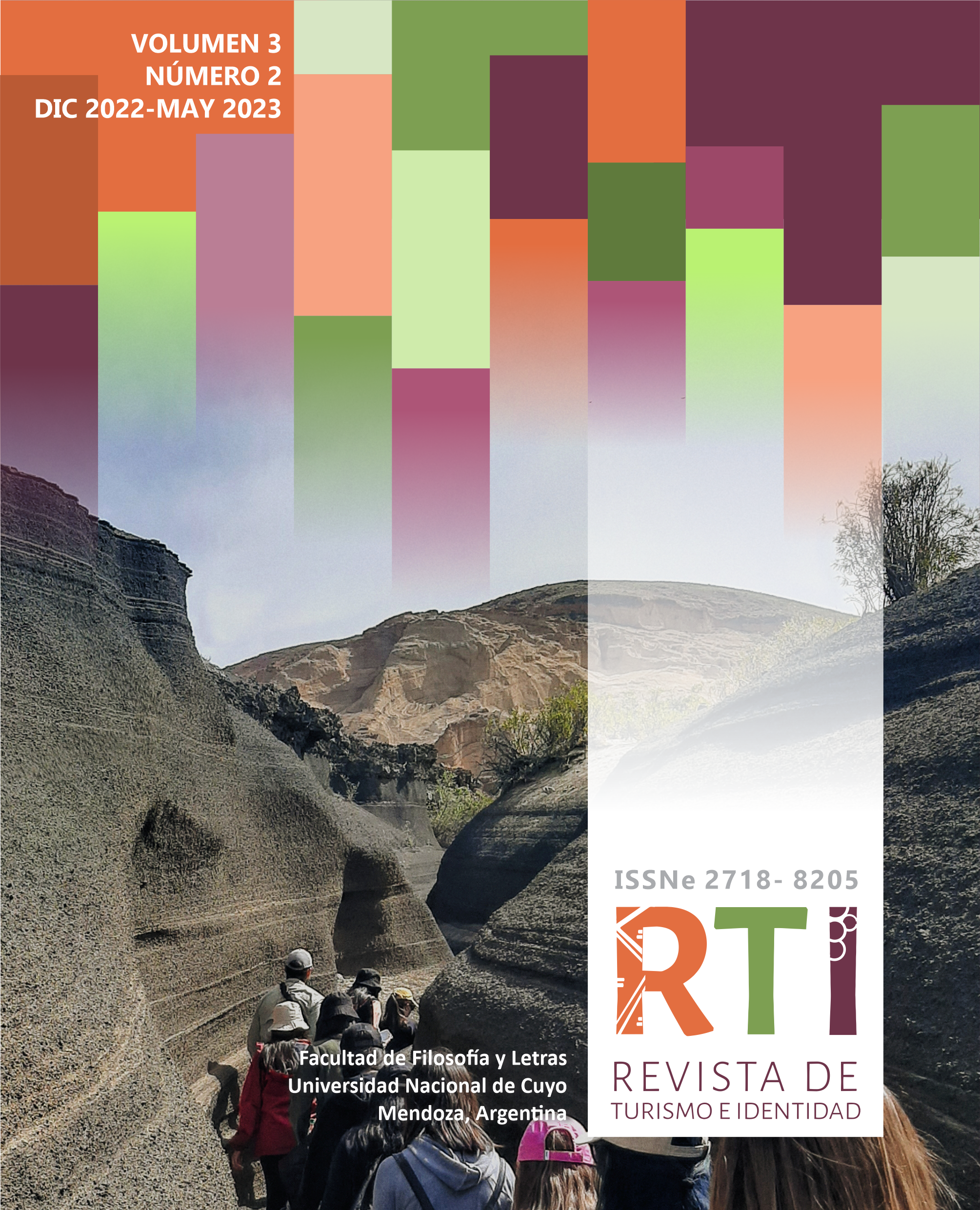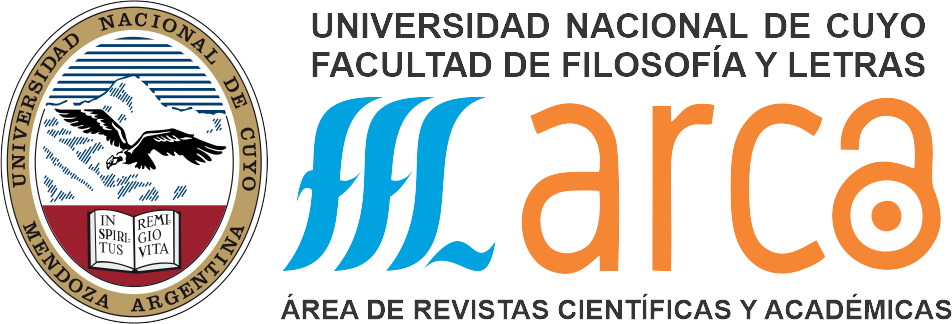La importancia del patrimonio arqueológico para el inicio del turismo en México. Un estudio de caso de Teotihuacán, del siglo XVI a 1930
Palabras clave:
patrimonio arqueológico, historia del turismo, TeotihuacánResumen
El objetivo del trabajo es comprender la relación del patrimonio arqueológico con el desarrollo del turismo y su institucionalización en México. Se parte de la premisa de que este patrimonio es uno de los primeros en convertirse en un recurso turístico susceptible de mercantilizarse, por lo que impulsó las acciones estatales para promover el turismo antes de que se masificara en México. Mediante el caso de Teotihuacán se identifican y analizan los procesos socioculturales para transformar un bien arqueológico en un atractivo turístico, ocurridos desde el siglo XVI hasta principios del siglo XX, y se utiliza el modelo de ciclo de vida de un destino turístico para periodizarlo y como fuentes la literatura de viajeros del siglo XIX, notas periodísticas e informes de trabajo de las instituciones encargadas de la gestión del patrimonio.
El estudio muestra que el uso del patrimonio arqueológico como representativo de la identidad nacional impactó en el desplazamiento de viajeros y turistas, pero el desarrollo del turismo y la construcción de la imagen del país como un destino turístico pleno de yacimientos arqueológicos está íntimamente relacionado con las preferencias de los turistas estadounidenses y los intereses económicos de ese país en México.
Citas
Arriaga, R. y González, C. (2016). Efectos económicos del sector cultural en México, Revista Análisis Económico, 31(77), p. 219-246.
Benítez, L. (1998). Sigüenza y Góngora: Criollo,nacionalista y hombre de ciencia,Colmena Universitaria. Disponible en: http://www.iifilologicas.unam.mx/pnovohispano/uploads/95sabernovo/art29_95.pdfBerger,D. (2006). The Development of Mexico’s Tourism Industry. Pyramids by day, martinis by night.Palgrave McMillan.
Bernal, I. (1992). Historia de la arqueología en México.Porrúa Editores.Bourdieu P. y Wacquant L. (1992). An invitation to Reflexive Sociology. The University Chicago Press.
Brocklehurst, T. (1883). Mexico to-day a country with a great future and a glance at the prehistoric remains and antiquities of the Montezumas.John Murray. Disponible en: https://archive.org/details/b24868267/page/n9
Bullock, W. (1824). Six months. Residence and travels in Mexico, II. John Murray, Albemarle-Street. Disponible en: https://archive.org/details/gri_sixmonthsres00bull/page/n7
Butler, R. (1980). The Concept of Tourism Area Cycle of Evolution: Implications for Management of Resources. En R. Butler (Edit.), The Tourism Life Cycle. I. Applications and Modifications (pp. 3-12). Channel View Publications.
De la Rosa, A. (29 de marzo de 2022). México fue el segundo país más visitado en 2021: OMT. El Economista. Recuperado de: https://www.eleconomista.com.mx/empresas/Mexico-fue-el-segundo-pais-mas-visitado-en-2021-OMT-20220329-0012.html
De Alva , I. (1985) Obras históricas.Universidad Nacional Autónoma de México-Instituto de Investigaciones Históricas.
De Torquemada, J. (1975). Monarquía indiana. Disponible en: http://www.historicas.unam.mx/publicaciones/publicadigital/monarquia/index.html
Erskine Inglis, F. (1982). Life in Mexico. University of California Press. Disponible en: https://digital.library.upenn.edu/women/calderon/mexico/mexico.html#VI
Gray, A. (1878). Mexico as it is. Being notes of a recent tour in that country with some practical information, as also some study of the church question. E. P. Dutton and Company. Disponible en: https://archive.org/details/mexicoasitisbein00gray/page/n7
Gruel, V. M. (2017). La inauguración de la Carretera Panamericana. Turismo y estereotipos entre México y Estados Unidos. Estudios Fronterizos, 18 (36), p. 126-150. https://doi.org/10.21670/ref.2017.36.a06
Guerrero, R. (2015). La construcción de una identidad cultural y el desarrollo del turismo en México. Pasos revista de Patrimonio y Turismo,13 (5), p. 1019-1036. Disponible en: http://pasosonline.org/Publicados/13515/PS515_03.pdf
Hernández, R. (1992). Rasgos de identidad nacional en la conciencia novohispana. Fuentes humanísticas, 2 (4), p. 28-41. Disponible en: http://zaloamati.azc.uam.mx/bitstream/handle/11191/1963/Rasgos_de_identidad_nacional_04_04.pdf?sequence=1&isAllowed=y
Howard, W. (1897). Journal of a tour in the United States, Canada and Mexico. Simpson Low, Marston and Company. Disponible en: https://archive.org/details/cihm_07249/page/n5
Humboldt von, A. (1878). Sitios de las cordilleras y monumentos de los pueblos indígenas de América.Gaspar Editores. Disponible en: http://cdigital.dgb.uanl.mx/la/1080017404/1080017404_MA.PDFInstituto Nacional de Antropología e Historia (INAH) (2020) Estadísticas de visitantes. https://www.estadisticas.inah.gob.mx/
Iracheta, M. P. (2015). En busca de la Pompeya Mexicana. Las exploraciones de Leopoldo Batres en Teotihuacán 1905-1910. El Colegio Mexiquense, Universidad Autónoma del Estado de México, Gobierno del Estado de México.
Lacarrieu, M. (2016). La alteridad y elexotismo en clave patrimonial turística. Aportaciones de la antropología.Quaderns,32, p. 123-143.
Mercado, E (2016). Patrimonio cultural y turismo en el México posrevolucionario. Revista de Turismo y Patrimonio Cultural Vol 14 N° 4. Universidad de Laguna España. Disponible en:https://www.redalyc.org/pdf/881/88146706016.pdf
Morales, G. y Hernández, J. M. (2011). Los stakeholders del turismo. Tourism & Management Studies, 1, p. 894-903. Disponible en: https://www.redalyc.org/articulo.oa?id=388743867081
Martínez, P. (2014) Los espacios de hospedaje en el siglo XIX. Bicentenario, 23, 30-41
Mateos, J. (2006). El turismo en México: la ruta institucional (1921-2006). Cuadernos de Patrimonio y Turismo Cultural,14, p.34-42.
Mayer, B. (1847). Mexico as it was and as it is.G. B. Zieber and Company. Disponible en: https://es.wikisource.org/wiki/México,_como_era_y_como_es
Navarro, D. (2015). Recursos turísticos y atractivos turísticos: conceptualización. Cuadernos de Turismo, 35, p. 335-357.Disponible en: https://www.redalyc.org/pdf/398/39838701014.pdf
Ober, F. (1885). Travels in Mexico and life among the Mexicans.Estes and Lauriat. Disponible en: https://archive.org/details/travelsinmexicol00ober/page/n7
Prats, Ll. (2006). La mercantilización del patrimonio: entre la economía turística y las representaciones identitarias. PH Boletín del Instituto Andaluz del Patrimonio Histórico,14 (58), p. 72-80.
Rebok, S. (2002). La expedición americana de Alexander von Humboldt y su contribución a la ciencia del siglo XIX. Bulletin de l’Institut français d’études andines,32 (3), p. 441-458. Disponible en: https://journals.openedition.org/bifea/6080
Rubial, A. (2002), Nueva España: imágenes de una identidad unificada. En E. Florescano (Comp.), Espejo Mexicano(p. 72-115). Consejo Nacional para la Cultura y las Artes, Fondo de Cultura Económica.
Sánchez, A., Vargas, E. y Castillo, M. (2017). Origen, concepción y tratamiento del ciclo de vida de los destinos turísticos: Una reflexión en torno al modelo de Butler. Compendium, 20 (38). Disponible en: https://www.redalyc.org/jatsRepo/880/88051773005/html/index.html
Schávelzon, D. (1983). La primera excavación arqueológica de América. Teotihuacán en 1676. Anales de Antropología, 20 (1), p. 121-135. Disponible en: http://revistas.unam.mx/index.php/antropologia/article/viewFile/413/393
Secretaría de Turismo (2005). Turismo en México. Treinta años de la Secretaría de Turismo. 1975-2005. Secretaría de Turismo.
Servicio Nacional de Turismo (2016). Manual de Destinos. Elementos para la gestión de Destinos Turísticos.Santiago de Chile. Servicio Nacional de Turismo. Disponible en: https://www.sernatur.cl/wp-content/uploads/2018/11/Manual-de-Destinos-Elementos-para-la-gestio%CC%81n-de-destinos-turisticos-1.pdf
Tudor, H. (1834). Narrative of a tour in North America: comprising Mexico, the mines of Real del Norte, the United States, and the British colonies: with an excursion to the island of Cuba: in a series of letters, II. James Duncan, Paternoster Row. Disponible en: https://archive.org/details/narrativeoftouri02tudorich
Tylor, E. B. (1877). Anahuac. Mexico and the Mexicans, ancient and modern. Long-mans Green Reader and Dyer. Disponible en: https://archive.org/details/anahuacormexicom00tylo/page/148
Wilson, R. (1856). Mexico: its Peasants and its Priests. Adventures and historical researches in Mexico and de silver mines during parts of the years 1851-52-53-54 with an expose of the fabulous character of the story of the conquest of Mexico by Cortez. Harper and Brothers Publishers. Disponible en: https://babel.hathitrust.org/cgi/pt?id=yale.39002005504163&view=1up&seq=9
Publicado
Cómo citar
Número
Sección
Licencia
LicenciaQuienes envíen trabajos a la Revista de Turismo e Identidad, que edita el Instituto de Investigaciones en Turismo e Identidad (IITI) de la Facultad de Filosofía y Letras de la Universidad Nacional de Cuyo (Mendoza, Argentina), otorgan automáticamente licencia no exclusiva y sin límite temporal de su manuscrito a dicha publicación. En consecuencia, como la distribución de la citada Revista no tiene finalidad lucrativa sino académica, el autor (los autores) autoriza(n) a la misma la difusión gratuita en formato impreso y medios electrónicos, tanto en red local como por vía internet.
Se establece que:
- Los/as autores/as conservarán sus derechos de autor y garantizarán a la revista el derecho de primera publicación de su obra.
- Los/as autores/as deben adherir a la Licencia Creative Commons Atribución-NoComercial-CompartirIgual 4.0 Internacional, a menos que se indique lo contrario, mediante la cual el autor permite copiar, reproducir, distribuir, comunicar públicamente la obra sin propósitos comerciales, por cualquier medio o formato. También, se pueden generar nuevas obras derivadas, siempre y cuando se cite y reconozca al autor original y su primera publicación en esta revista.
- Los/as autores/as podrán adoptar otros acuerdos de licencia no exclusiva de distribución de la versión de la obra publicada (p. ej.: depositarla en un archivo telemático institucional o publicarla en un volumen monográfico) siempre que se indique la publicación inicial en esta revista.
- Se permite y recomienda a los/as autores/as difundir su obra a través de Internet (p. ej.: en archivos telemáticos institucionales o en su página web) luego de su publicación, lo cual puede producir intercambios interesantes y aumentar las citas de la obra publicada. (Véase El efecto del acceso abierto).















